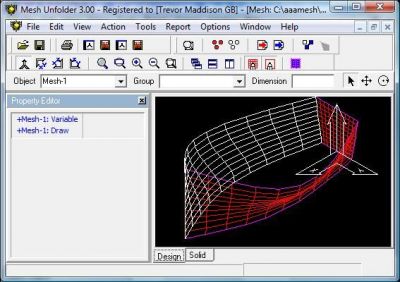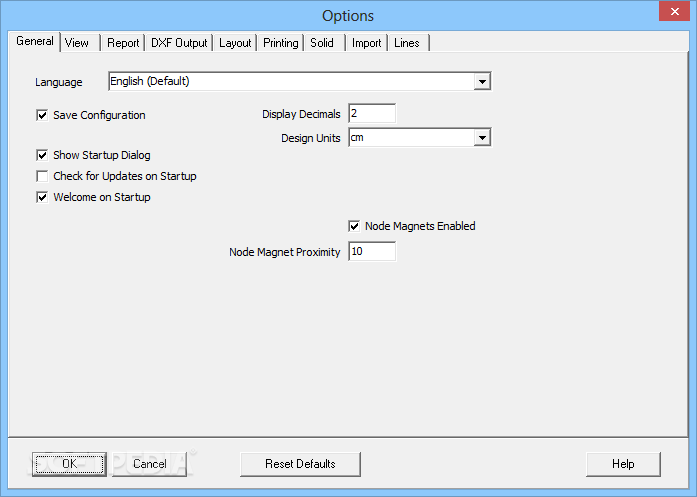
I've been going through a few of the forum posts regarding STL to see what I could find. I'm still on quite a high having aquired such information and now being able to generated flat patterns in Mesh Unfolder (well I'm getting there). Sorry but I just have to say once again, THANK YOU for that great tutorial you gave me on getting the surfaces out of a solid. If not I might start a new thread on the STL export. I'll plod along further and see if I can work anything out. I've Googled about STL export from Alibre and there seems to be quite a few reports of bugginess with STL exports.
MESH UNFOLDER DEMO PLUS
In my cad, I can delete them plus all the other 100s of mesh triangle lines quite easily to leave me with the basic perimeter (my cut path) but I'm wondering if these "weird" lines are an indication of a less than perfect STL file. Plus the generated flat pattern has a lot of extra "weird" lines which cross over the perimeter of the flat pattern. However once it gets into Mesh Unfolder the scale is all out of whack (not a 10:1 reduction any more but a number with several decimal places) and I don't know if the problem is from the STL file or in Mesh Unfolder. Visually the part (surfaces) look fine in both Doublecad & the STL viewing software. When I opened in a dedicated STL viewing program with measuring facilities the measurements where 10mm. The scale seems to be going from 100mm in Alibre to 10mm in the STL file (or 10 units because when I opened up the STL in a demo version of Doublecad XT Pro, it was 10 inches). I seem to be getting problems when I get to the STL side of things.
MESH UNFOLDER DEMO FULL
My Alibre Design version is 2012 Personal with full import / export capability. IGES import / export seemed to by fine and all measurements stayed the same at each stage. Scaling is going a bit funny so I checked at each stage of the import / export. What's more, it would not be exaggerated to consider Mesh Unfolder more than what it actually is, a powerful 3D unfolding tool, as the app can also be employed to convert certain CAD unsupported files.įor example, it can convert STL files directly to DXF, one of the most common formats that is largely supported by most CAD apps.I couldn't get away with it that easy could I. Versatile app designed for sheet material manufacturers


Yes, you surely cannot overlook the fact that its interface is somewhat outdated and yes, users with large screen resolutions are prone to miss the buttons when trying to click them.īy now, it is quite clear that Mesh Unfolder is not designed to replace CAD applications that are generally more powerful, but instead it is developed to help you import models from the previously mentioned programs, transform 3D material surfaces into 2D patterns and then export them back. Comes with an outdated user-interface, but it gets the job done, nonethelessĬonsidering that most people who use Mesh Unfolder already have a certain level of CAD knowledge, working with the application should not represent any struggle.

After the 3D meshes are unfolded and the tensions reduced to a minimum, you can export the results to DXF formats and other CAD programs for further editing. Getting down to real-world facts, Mesh Unfolder makes it possible for you to import DXF, STL, OBJ or STL from most CAD systems. In other words, Mesh Unfolder actually reverses the process of material production (when inevitably, certain tensions in the surface occur) and by doing so, it helps you find the best results for flattening 2D patterns, with the least amount of internal tensions. It provides you with the tools to split the mesh into sections and to unfold it While most CAD (short for Computer Aided Design) apps out there come with 3D meshing capabilities, there is no doubt that unfolding and flattening models is quite a complex process, party thanks to the internal tensions from within any bent surface.ĭesigned specifically for sheet material manufacturers, Mesh Unfolder is a powerful yet lightweight tool that takes on the complicated process of transforming 3D formed surfaces into 2D unfolded and flattened patterns.


 0 kommentar(er)
0 kommentar(er)
